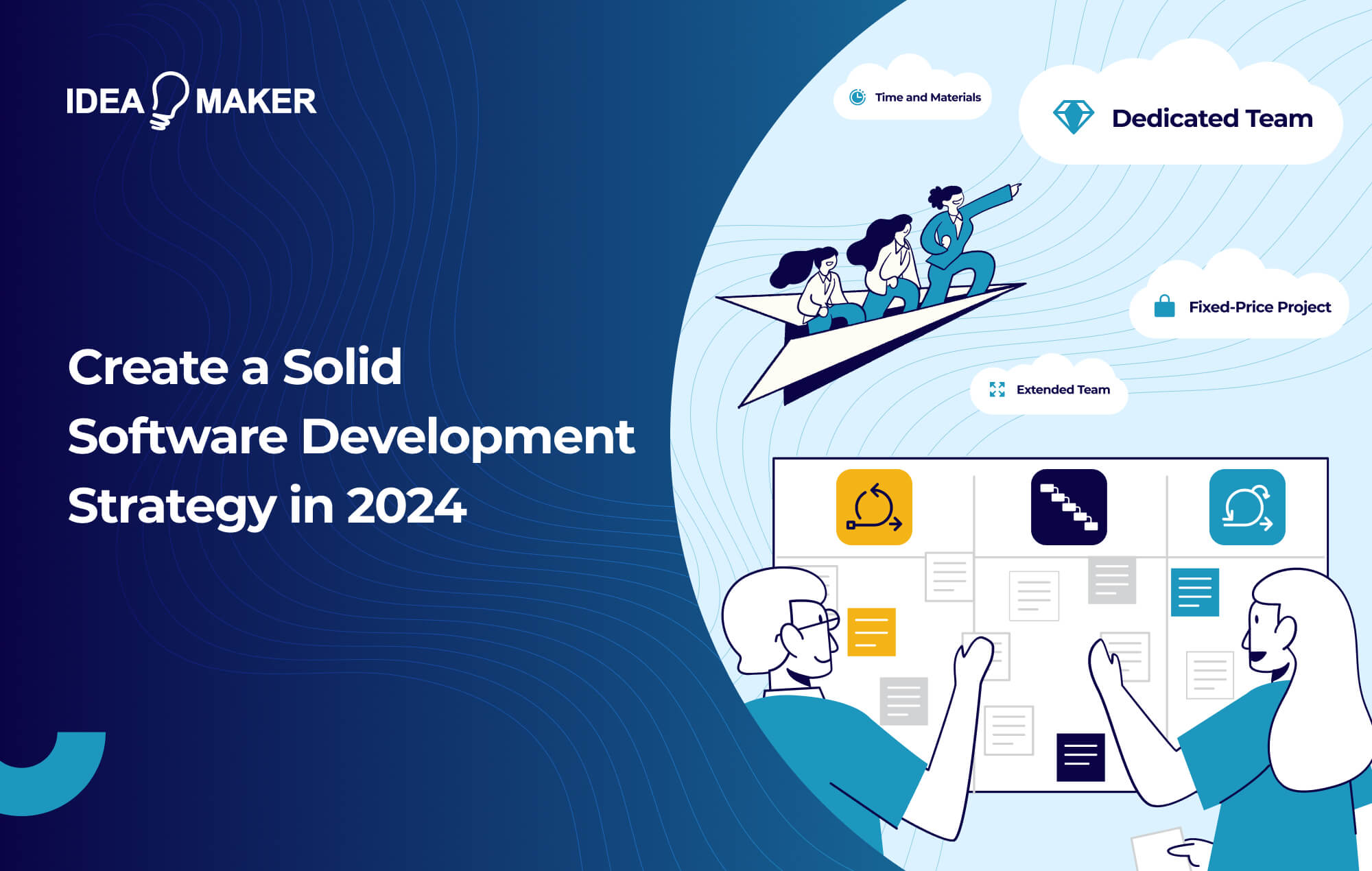Table of Contents
Mobile applications that focus on learning a new language are on the rise worldwide, with several of these platforms experiencing their revenues double in the last two years. In 2021 alone, these apps generated $8.21 billion – a 32-percent year-over-year increase, according to Business of Apps.
As the most popular language-learning app on the market, Duolingo proved to also be the most lucrative, reporting $250 million in revenue that same year, including $180.7 million from its 2.5 million paid subscribers.
In this article, we’ll discuss how Duolingo is effectively setting itself apart from the competition and guide you through the appropriate steps to take to create a language-learning app of your own. Keep reading to learn more.
What You’ll Learn In This Post
- How Duolingo Teaches Language
- Language App Market Trends
- Popular Duolingo Features
- 4 Steps to Developing a Language Learning App like Duolingo
- Marketing Your App Like Duolingo
- Monetizing Your Language Learning App
What Is Duolingo?
Duolingo provides the ability to learn new languages by offering quick “bite-sized” lessons that focus on making the educational process as fun as possible. The platform, which offers more than 100 courses across 43 languages, incorporates game-like features and exciting challenges that are meant to build skills while also engaging users.
Conceptualized in 2009 by Luis von Ahn, a professor at Carnegie Mellon University, and post-graduate student Severin Hacker, Duolingo was released to the public in 2012, becoming the top free education app in the Google Play Store with 5 million users after only a year on the market.
How Does Duolingo Teach Language?
Duolingo combines artificial intelligence with language science to allow users to learn a new language by practicing various skills, such as vocabulary, grammar, pronunciation and listening. This means that users can access lessons created with international language standards in mind that are specifically tailored to their individual level and pace.
As part of each language course, users will be provided with a unit guidebook with tips and key phrases, stories aimed at becoming more comfortable with conversations, and practice lessons to ensure a strong learning foundation.
While it aims to feel like a game, Duolingo’s methodology has proven to promote long-term memory by ensuring that users learn in an interactive and personalized way and remain motivated throughout the entire process.
Language App Market Trends
The language learning industry has achieved massive success in recent years, reaching a total market value of $59.6 billion in 2021.
This boom in demand for these types of apps was greatly influenced by COVID-19 shutdowns, as quarantined individuals worldwide turned to remote learning solutions. In fact, during the pandemic, Duolingo garnered 30 million new users – or 67 percent more learners compared to the same period in 2019.
Suffice it to say, the language learning app market will continue expanding in years to come, especially seeing as how the industry is expected to be worth $191.06 billion by 2028, according to the BrandEssence report.
Artificial Intelligence
Technological advancements in recent years have greatly expanded the digital learning industry through the rise of artificial intelligence. This technology is becoming increasingly common in the educational sector to provide automated assessments, speech recognition, and adaptive learning. For example, Duolingo implements artificial intelligence to create personalized learning modules for each user.
Increased European Users
The success of language learning apps can also be attributed to a growing number of European users. Due to national mandates, European students are leading the language learning market with the highest number of people learning a foreign language. In fact, Duolingo revealed that new users in the U.K. increased by 132 percent in 2020 – nearly twice as much as the platform’s worldwide rate of 67 percent.
Popular Among Gen Z
As the highest population of digital and social media users, Gen Z is also contributing to the rise of language learning apps like Duolingo. One reason for this is that the younger generation is highly motivated to learn new skills and, ultimately, enhance their career opportunities. Additionally, the Gen Z population is invested in connecting with other cultures, increasing the demand for language learning apps worldwide.
Popular Duolingo Features
In order to create a language learning app that’s poised for success, it’s essential that you implement a few basic features, including a variety of language courses, goal-tracking capabilities, and gamification elements.
Variety of Languages
With more than 40 languages available to learn, Duolingo offers a wide variety of courses to choose from, including endangered languages, such as Yiddish, and fictional ones, like Game of Thrones’ High Valyrian.
As of September 2022, the platform’s most popular language was Spanish, with 30.3 million learners, followed by French, with 18.3 million learners. Because they are the most used languages, they also undergo the most updates and contain all the latest features.
Duolingo, however, is constantly adding to its offerings by launching beta languages that are still being tested and improved upon through user feedback. These currently include Hungarian, Haitian Creole, Navajo, and Zulu.
Goal Tracking
Another aspect of Duolingo that has contributed to its international popularity is the fact that it allows users to set goals and track their learning progress. Users have the option of setting a personal goal each day that can be easily tracked on the app’s home screen, which is designed like a path that’s followed step-by-step throughout the language course.
The path itself is organized into units that cover specific objectives, with each unit consisting of different levels that represent the path’s stepping stones. To get to the next stone, users will have to complete a variety of interactive lessons within that level. As users progress along their path, they will encounter more challenging exercises like speaking and writing in the language they are learning.
In addition to offering a visual depiction of one’s progress, Duolingo’s method is based on the research-backed idea of spaced repetition, meaning it’s more effective in the long run to learn by spacing out practice instead of cramming a large amount of information into one session.
Gamification
Aimed at keeping users engaged and motivated, Duolingo also offers a variety of game-like features to prove that learning a new language doesn’t have to be boring.
Experience Points, for example, are provided whenever a user completes a lesson, reads a story, or does practice work. These points can then be used to compare progress with friends and compete with other users in weekly leaderboard competitions.
Additionally, the platform implements a Hearts feature that’s essentially the same as “lives” in video games – each mistake costs one heart, and hearts are restored every five hours. Users can also earn gems that can be used to purchase Unlimited Hearts, as well as items that freeze your activity streak and boost your time.
4 Steps to Developing a Language Learning App like Duolingo
Now that you understand Duolingo’s most notable features and how the platform works, we’ll walk you through the steps you’ll need to take when developing a learning language app of your own.
1. Determine Niché
As is the case with any app, the first step in developing a language learning app like Duolingo is to identify and define a specific niche. For example, will your app have multiple languages available to learn or just focus on one? Once a niche has been determined, you can then narrow down what features will be required as a result.
2. Outline Learning Process
Next, you’ll need to outline the platform’s learning process and define how exactly your users will achieve learning a new language. This process could be similar to Duolingo in that you focus on gamification and spaced repetition, or you could implement a new procedure of your own. Either way, this decision will affect the overall design and development of your app and will need to be carefully thought out.
3. Design and Develop App
After determining a niche and outlining the learning process, it’s now time to design and develop your learning language app. This will include creating a mockup of your platform and its features using proper user interface (UI) and user experience (UX) principles. You should also utilize wireframing tools to ensure functionality and visual understanding, which will ultimately help retain users and increase profits.
Once the app has been designed, you can then start developing the platform. This, of course, will require extensive knowledge, skills, and experience, so you may want to consider hiring an expert development agency. However, before hiring an agency, you should first examine their portfolio, services, and post-release support options to verify that they are the best fit for the development of your language learning app.
4. Deliver and Maintain
Finally, your app can be delivered to iOS and Android app stores, but your work is hardly complete. Even after the app has been launched, you will need to monitor its performance on a regular basis and identify and fix any bugs that may arise. This will maintain a positive user experience and ensure that your app is working the way it was intended to.
Marketing Your App Like Duolingo
After your app has been launched, you can then start exploring marketing strategies like App Store Optimization, Google search ads, and social media promotion. A solid marketing plan will help get the word out about your language learning platform and grow its user base.
App Store Optimization
Like Search Engine Optimization, App Store Optimization is meant to improve a mobile platform’s visibility and overall user appeal in app stores. This is accomplished by optimizing various aspects of your app’s listing, including its name, title, icons, and keywords, by using language that’s compelling and attention-grabbing.
While SEO focuses on optimizing websites to achieve more traffic on search engines, the goal of ASO is to increase app store downloads. That’s why a proper ASO is essential for all mobile apps, as it will ensure that your platform is discovered – and downloaded – by relevant users.
It’s important to note, however, that you will need to optimize your app a bit differently for the operating system it’s built to run on. The Apple App Store, for example, will entail a longer optimization process and different ranking factors compared to the Google Play Store.
Google Search Ads
Pay-per-click (PPC) ads can be placed on Google search results to drive traffic to your app store listing. This will involve three main components: a headline, display URL, and description text, all with the same goal of enticing users to click the ad.
There are many benefits to setting up a Google search campaign. Not only does it increase leads and organic traffic to your app, but it also helps to target individuals who are actively searching for a product similar to your own.
Plus, Google makes it incredibly simple to create an ad campaign, set a target audience, and choose a budget. It even lets you optimize the campaign after its launch, track conversions, and fix any issues you may encounter along the way.
Social Media Marketing
Pay-per-click ads can also be placed on social media platforms and shared with a specific audience. This type of paid marketing strategy will raise awareness about your language learning app, help garner new followers, promote new content, and generate leads and conversions.
In addition to paid ads, you can create free organic content like posts and photos that can be shared on your social media page. While this is typically the best way to engage and nurture a connection with your current users, PPC ads will enable you to reach a greater number of people and allow you to zone in on your target audience.
Monetizing Your Language Learning App
Once a marketing strategy has been implemented, you should begin looking for ways to monetize your platform. This can be done in a variety of ways, including offering an upgraded subscription service, charging for individual language courses, and allowing users to purchase special in-app items.
SaaS Model
Perhaps the most common way to monetize an app is through the Software-as-a-Service model, in which users can download the platform for free but unlock additional features by paying a monthly fee. Duolingo, for example, enables users to upgrade to Super Duolingo for $6.99 a month to receive an ad-free experience, personalized practice, and unlimited Hearts and test outs.
Charge for Each Language
If you intend to offer multiple languages on your app, you could also charge users a fee to access each individual language. This can be done through a set fee for each course or by tweaking the cost based on user demand. However, you should still plan to provide a few free basic courses as well.
Gamification
You could even incorporate a system similar to Duolingo’s Hearts that depletes users’ “lives” as a result of wrong answers. For this monetization strategy, users can pay to replenish their lives if they don’t want to wait the required timeframe to receive more.
Mobile App Development from Idea Maker
Since 2016, Idea Maker has excelled in all areas of mobile app development, creating custom platforms in a variety of industries, including social media, health and beauty, and agriculture. If you are looking for a dedicated and trusted agency to help build your language learning app, then schedule a free consultation with us today.



